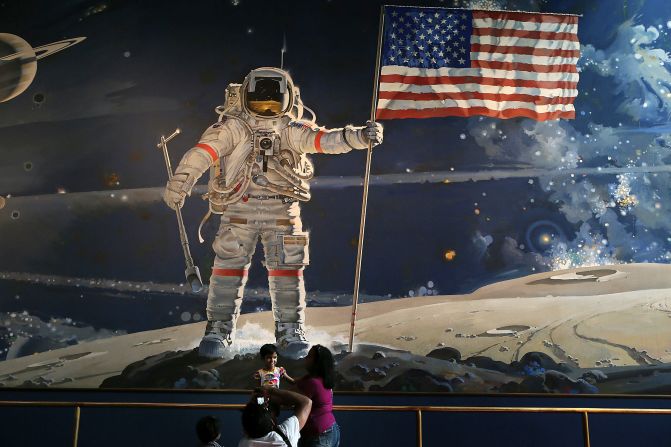Background
The Moon landing was the culmination of the Space Race between the United States and the Soviet Union during the Cold War. In 1961, President John F. Kennedy set a national goal to land a man on the Moon and return him safely to Earth before the decade's end. This objective led to the development of NASA's Apollo program, which aimed to achieve crewed lunar exploration.
Apollo 11 Mission
Launch and Journey
Apollo 11 launched from Kennedy Space Center in Florida on July 16, 1969, at 13:32 UTC. The crew consisted of Commander Neil Armstrong, Command Module Pilot Michael Collins, and Lunar Module Pilot Buzz Aldrin. The spacecraft comprised three parts: the Command Module (Columbia), the Service Module, and the Lunar Module (Eagle).
After a three-day journey, Apollo 11 entered lunar orbit on July 19. Armstrong and Aldrin transferred to the Lunar Module and began their descent to the Moon's surface on July 20.
Lunar Landing and EVA
The Lunar Module Eagle landed in the Sea of Tranquility on July 20, 1969, at 20:17 UTC. Armstrong's first step onto the lunar surface occurred at 02:56 UTC on July 21, marking the first time a human set foot on another celestial body. He famously stated, "That's one small step for man, one giant leap for mankind." Aldrin joined him 19 minutes later.
During their 2.5-hour extravehicular activity (EVA), Armstrong and Aldrin collected 21.6 kilograms of lunar material, deployed scientific instruments including a seismometer and a laser retroreflector, and planted the American flag. They also unveiled a plaque on the Lunar Module that read, "Here men from the planet Earth first set foot upon the Moon. July 1969 A.D. We came in peace for all mankind."
Return to Earth
After spending 21 hours and 36 minutes on the lunar surface, Armstrong and Aldrin lifted off to rejoin Collins in the Command Module. The crew returned to Earth on July 24, 1969, splashing down in the Pacific Ocean southwest of Hawaii. They were recovered by the USS Hornet and subsequently placed in quarantine for 21 days to prevent potential contamination.
Scientific Contributions
Apollo 11's mission provided invaluable scientific data. The lunar samples collected allowed scientists to analyze the Moon's composition and geological history. The deployed instruments, such as the seismometer and laser retroreflector, enabled long-term studies of lunar seismic activity and precise measurements of the Earth-Moon distance.
Technological Advancements
The mission spurred numerous technological advancements. The development of the Apollo Guidance Computer, one of the first digital computers, was crucial for navigation and control. Innovations in telecommunications allowed real-time transmission of data and video, showcasing pioneering achievements in long-distance communication technologies.
Cultural and Societal Impact
The Moon landing had a profound cultural impact, inspiring a generation and igniting interest in space science and technology. An estimated 650 million viewers worldwide watched the live broadcast of the first steps on the Moon. The mission fostered a sense of global unity, as millions worldwide tuned in to witness the event, reinforcing a shared human aspiration to explore beyond our planet.
Legacy
The success of Apollo 11 demonstrated human capability to explore environments beyond Earth, laying the groundwork for future space exploration endeavors. Subsequent missions benefited from its technological developments, as the knowledge and infrastructure acquired from Apollo 11 provided a solid basis for endeavors like the Space Shuttle program and the International Space Station.
Controversies and Conspiracy Theories
Despite overwhelming evidence, some conspiracy theories claim the Moon landing was staged. These theories have been debunked by extensive documentation, photographs, and testimonies from astronauts and mission personnel. Scientific analyses of lunar samples and data from subsequent missions further confirm the authenticity of the Apollo 11 Moon landing.
Commemorations
The Moon landing continues to be commemorated globally. For instance, on July 20, 2025, Pope Leo XIV visited the Vatican astronomical observatory to mark the 56th anniversary of the Apollo 11 Moon landing. He also spoke with astronaut Buzz Aldrin to honor the historic event and reflect on human achievement and the grandeur of creation.
Conclusion
The Moon landing remains one of humanity's most significant achievements, symbolizing the spirit of exploration and the pursuit of knowledge. It stands as a testament to what can be accomplished through innovation, collaboration, and determination.
